Vision and hearing have embraced the digital realm, but giving computers a sense of smell, our most ancient and profound sense, has yet to follow suit. To tackle this age-old hurdle, Osmo, a startup specializing in digital olfaction, combines cutting-edge artificial intelligence with the science of smell.
“To digitize scent, we have to invent and integrate all three: turning odor molecules into digital signals; understanding how these signals are related and perceived as scents; and converting these digital representations back into real scents.
official web-site of Osmo.
At Osmo, we started by building the world’s first map of odor, and have begun writing scents from the map into fragrance ingredients. We’re now embarking on end-to-end reproduction of a captured scent. We call this an Osmograph, and believe that like a photo or a song an Osmograph has the power to activate treasured memories and evoke profound emotions.”
Osmo is assembling a skilled and diverse team to advance its outstanding research and realize its vision. The team encompasses various fields of expertise such as machine learning, sensory neuroscience, data science, engineering, fine fragrance, analytical chemistry, and product development.
In August 2023, renowned Master Perfumer Christophe Laudamiel joined the Osmo team. His role involves leveraging Artificial Intelligence to create new fragrance molecules and effects.
Many of you might be acquainted with Christophe Laudamiel, who boasts nearly three decades of experience in the perfume industry. Throughout his career, he has crafted scents for renowned brands including Ralph Lauren, Tom Ford, Clinique, Estée Lauder, Michael Kors, Mugler, and Tommy Hilfiger. Laudamiel’s profound interest in chemistry and fragrance formulation emerged early on after emerging victorious in the French National Chemistry Olympiads of 1986. He earned his creative perfumery degree from the Procter & Gamble Creative Perfumery School and has collaborated with leading companies such as Procter & Gamble, Fragrance Resources, and International Flavors & Fragrances (IFF).
Around a decade ago, Sergey Borisov conducted a compelling interview with Christophe Laudamiel, which highlighted his remarkable accomplishments.
After the announcement about hiring Cristophe Laudamiel, Osmo published his candid monologue called “Why I Joined Osmo.”
“I’ve learned that artists must collaborate with scientists and technologists to develop new forms of expression, new instruments, new pigments, new electronic effects, or new fragrance materials. Simply put, science and technology allow the art to push beyond its own artistic frontiers – and ultimately to create new emotional rides for people. In turn, artistic projects allow scientists to put their new hypotheses or their new discoveries to test before making them viable in the commercial market.
I have always believed that scientists in olfaction do not experiment with ingredients enough and do not sniff enough. We’re going to change that and build, in Cambridge, a great library of ingredients and a world-class perfume studio where one scientific experiment will lead to the next. One can find a music recording studio just about anywhere on this planet, even on remote islands. Perfume studios are rare. We’ll have one in New York, one in Cambridge and one, already made available via BélAir Lab, in Japan.”
part of Cristophe Laudamiel’s monologue, full version available on Osmo’s blog.
What exactly does the Osmo team do and what have they accomplished so far?
On August 31, 2023, the Osmo team, in collaboration with the Monell Chemical Senses Center, University of Reading, and Arizona State University, published a significant research paper in Science. The paper, titled “A Principal Odor Map Unifies Diverse Tasks in Human Olfactory Perception,” marks a milestone achievement for Osmo. Originating from machine learning research conducted at Google Research, Osmo combines artificial intelligence and olfactory science to enable computers to possess a sense of smell.
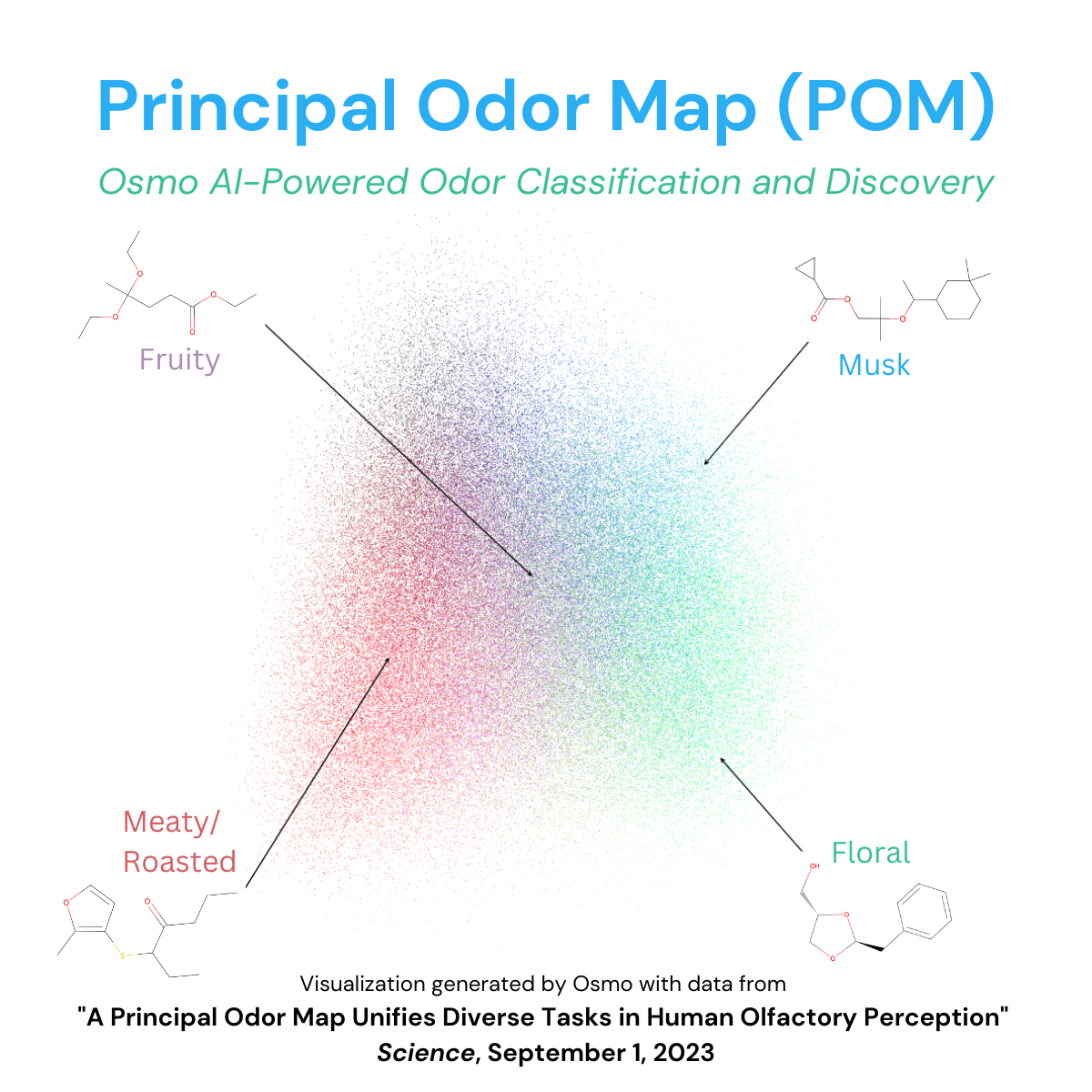
Two questions have long intrigued olfactory researchers: why do molecules have specific smells, and how can we predict those smells based on their structures? Over the past century, sparse data, lack of advanced technology, and the perception of smell as a qualitative, subjective experience have limited progress in answering these questions. But with recent advances in AI, Osmo has been able to solve these long-standing challenges—marking a pivotal moment for engineering olfaction.
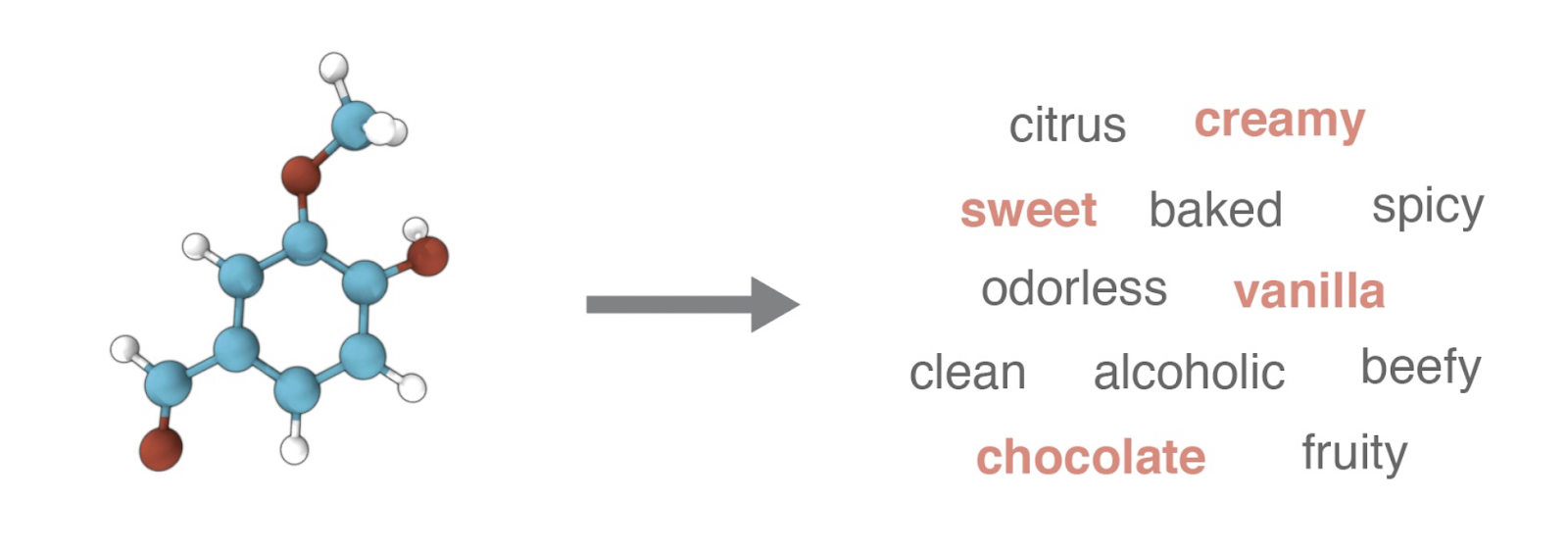
Osmo CEO Alex Wiltschko and his team utilized graph neural networks (GNN) to develop an original odor map called the principal odor map (POM). This map stands out as the first of its kind and demonstrates superior scent prediction abilities compared to humans. By training their machine-learning model on a dataset comprising 5,000 molecules, they managed to accurately predict the scents of numerous previously unsmelled molecules based solely on their molecular structures. When comparing the model’s performance to that of individual participants, who evaluated scents using a lexicon of odor descriptions, the model surpassed any single participant in terms of predicting the consensus—the collective average of the group’s odor ratings. Furthermore, the model successfully identified multiple pairs of molecules with dissimilar structures that surprisingly shared similar smells. It also exhibited the capability to characterize a broad spectrum of odor properties, including scent strength and perceptual similarity, for approximately 500,000 potential scent molecules.
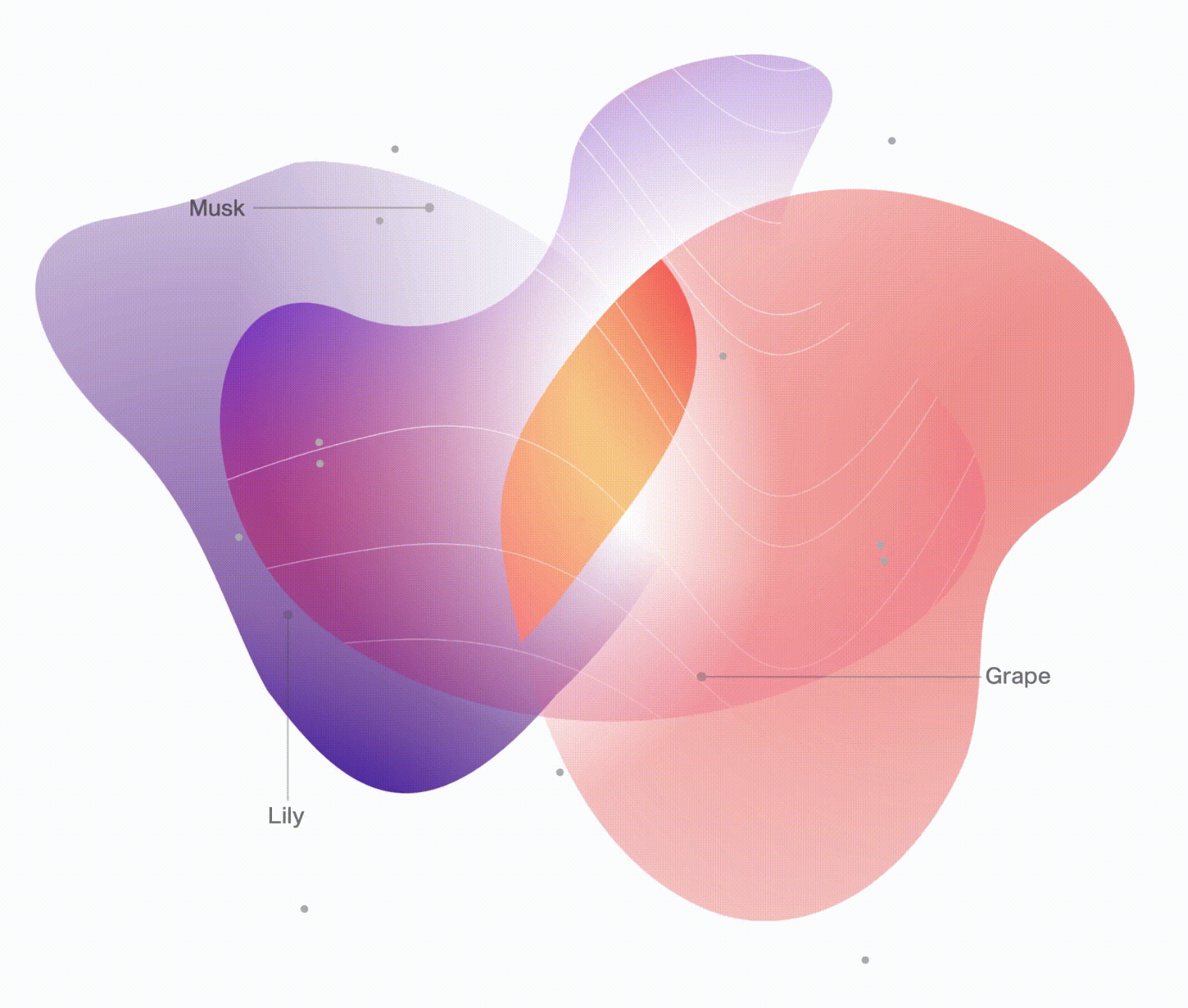
“Our work represents the very first step to quantifying our sense of smell,” said Alex. “Computers have been able to digitize vision and hearing, but not smell—our deepest and oldest sense. The fundamental nature of smell is that it serves as the basis of human survival and plays a formative role in our emotions and memories, yet we haven’t been able to develop systematic methods to quantify this important sense. Now that we can control and engineer scents, we will finally be able to take the next step of innovating olfaction, in order to benefit human health and well-being.”
Based on this research, Osmo has created a powerful platform that accelerates the search through the billions of molecules in the chemical space to predict the scent of any molecule that exists or is manufactured.
“This is a zero-to-one moment for olfaction,” said Alex. “AI has transformed so many processes in the chemical world, including drug discovery, but scent hasn’t been tackled yet. In some ways, we see AI in drug discovery as a precedent for ways that AI will revolutionize olfaction. Similar to how the advent of AI is changing the way drug hunters find new candidates that are more likely to succeed in the clinic, we see AI augmenting the role of synthetic chemists and master perfumers; the scent hunters who comb through myriad molecules to create the scents that are an integral part of our lives.”
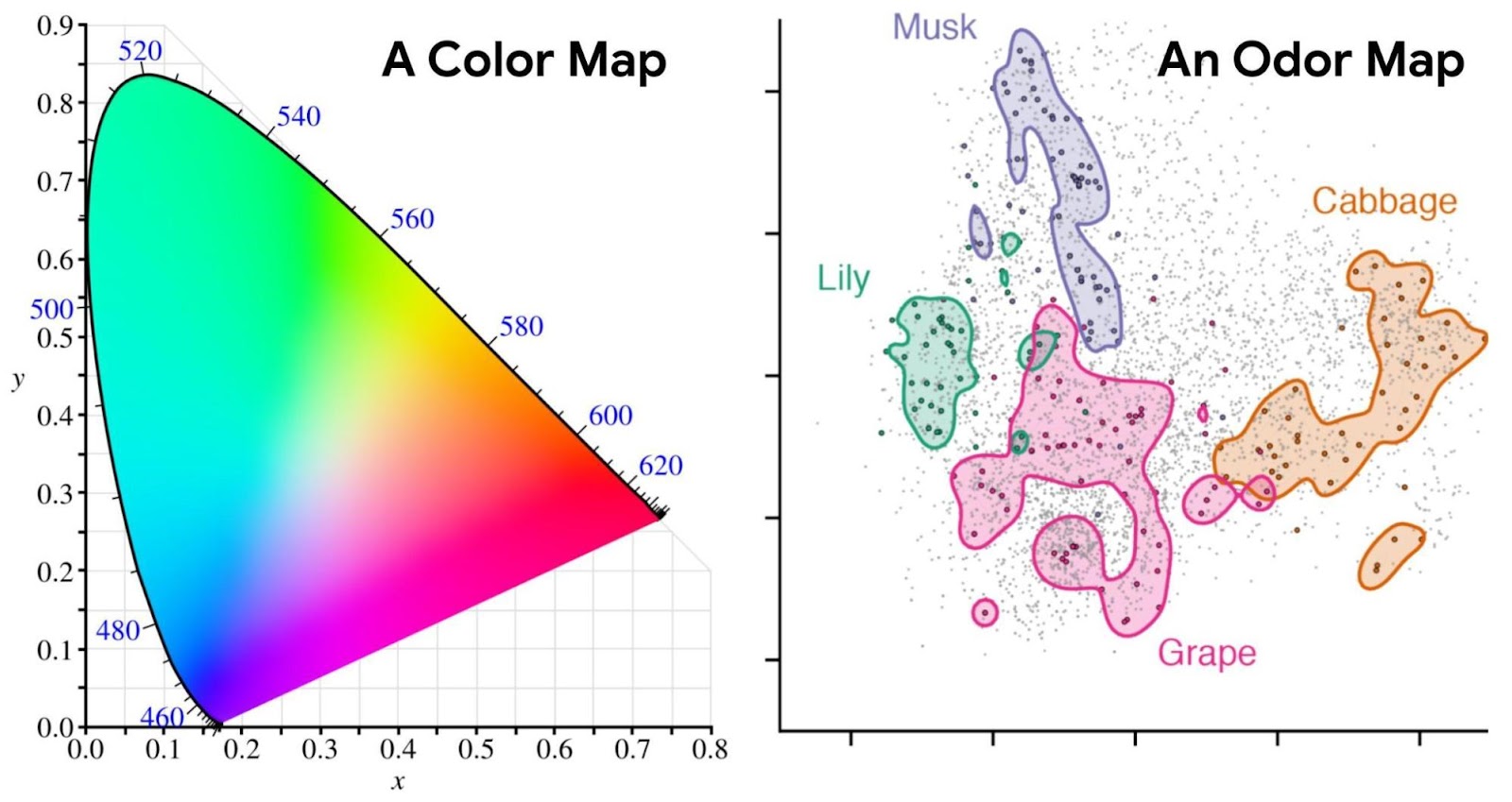
Moving forward, Osmo is pursuing two main goals to support its mission. The fragrance industry is facing stricter standards and more difficult design challenges, so the company’s first goal is to lead the discovery of new scent ingredients that are safe, sustainable, and environmentally friendly. The second goal is to digitize smell. In the same way that RGB and frequency mapping opened up a world of technological innovation for vision and hearing, Osmo aims to create digital representations of smell that will change how we capture, transmit, and remember scents. This reflects the underlying vision of Osmo—to catalyze the evolution of scent from ephemeral to enduring.
About Osmo
Launched in January 2023 with $60 million Series A funding led by Lux Capital and Google Ventures, Osmo fuses machine learning, data science, psychophysics, olfactory neuroscience, electrical engineering, and chemistry in a multi-disciplinary approach to digitizing scent. Osmo’s work is grounded in digital olfaction research that the team validated at Google Research, including two pivotal studies that used Graph Neural Networks to predict the smell of a molecule from its structure and to investigate the biological underpinnings of odor similarity. The company has begun work in the flavor and fragrance market to create a new generation of better, safer, environmentally-friendly aroma molecules. Over time, Osmo expects to work in domains such as public health and agriculture on solutions that help humans detect diseases earlier, track pandemics faster, grow more food, catch food spoilage, and ward off insects.


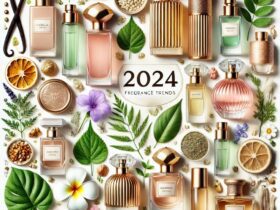






Leave a Reply